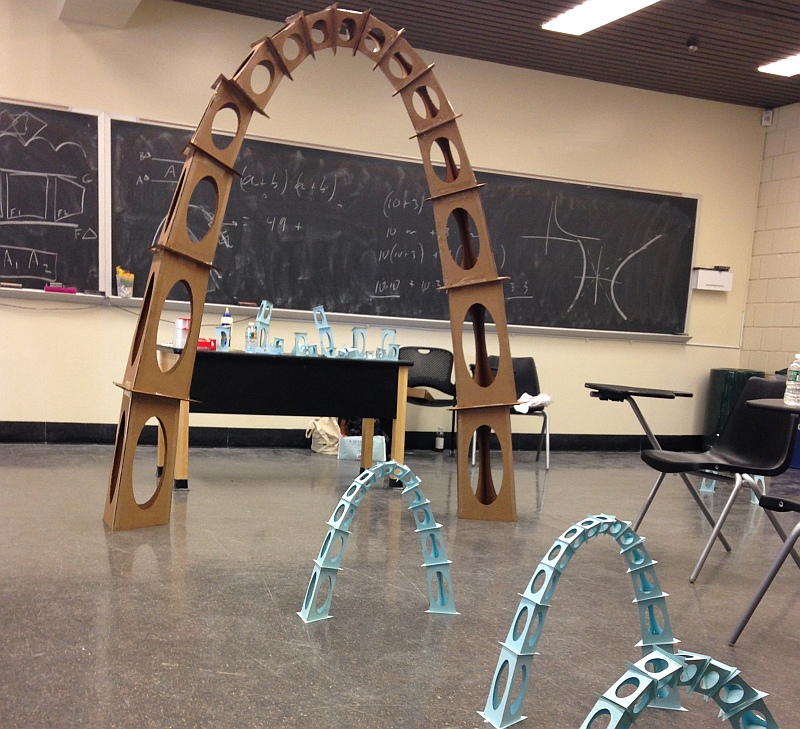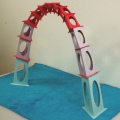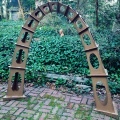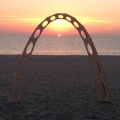The catenary curve is interesting because there are many
examples of it in the world around us. The best way to
visualize a catenary curve is to imagine the shape of a hanging
chain. (The word comes from the Latin word
catena
meaning "chain.") Catenaries are used in engineering and
architecture, for example in the shape of hanging bridges, or
when inverted, in the shape of some arches. One of the
most impressive examples is
the St.
Louis Gateway Arch. Catenaries can also be found in
nature, for example in the curve of a spider web.
At first glance, catenaries might look like parabolas, but they
have a completely different formula. The formula gives a
shape that has a special structural property when used as an
arch. When the chain shape is inverted into an arch and
divided into building blocks, the blocks can support each other
by gravity alone. In these workshops, students will build
catenary arches and physically experience their special
properties.
To fully understand how catenaries differ from parabolas and why
chains take the shape of catenary curves, students would need
some calculus background. We will not go into those details in
these workshops as pre-university students generally are not
ready for this material. Rather, we hope this activity
inspires students to keep building their mathematics knowledge,
leading towards integral calculus (and beyond).




